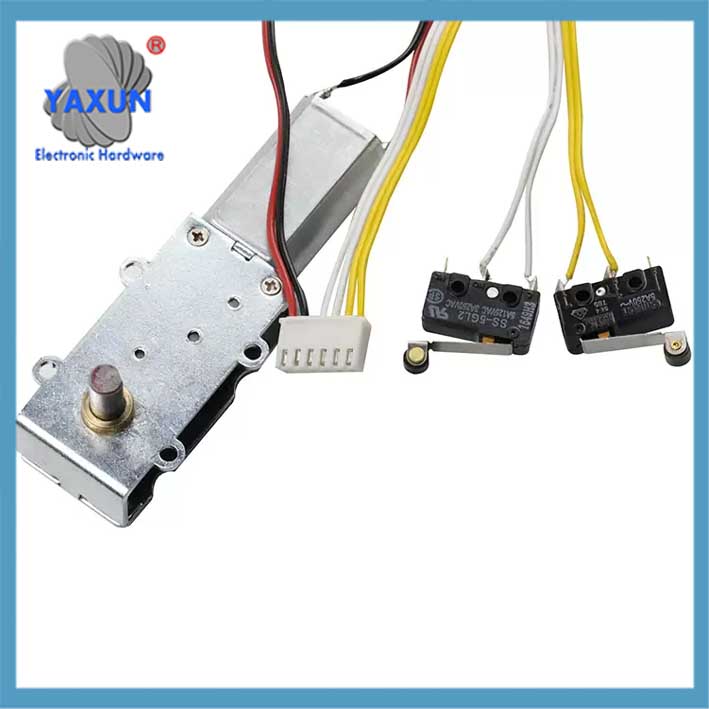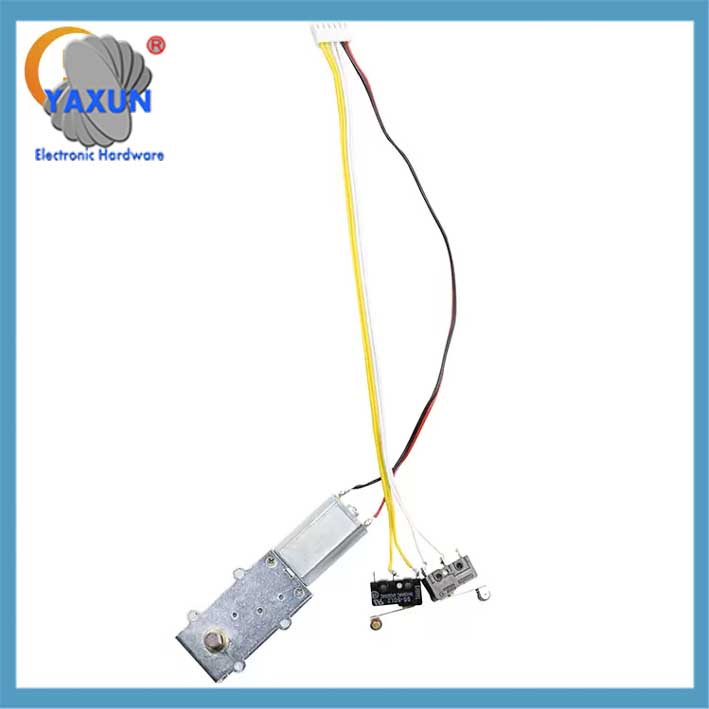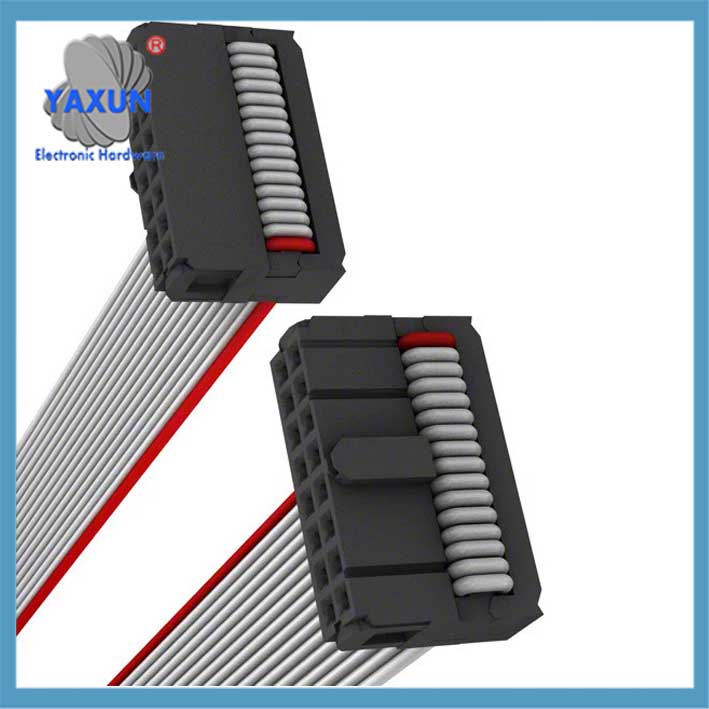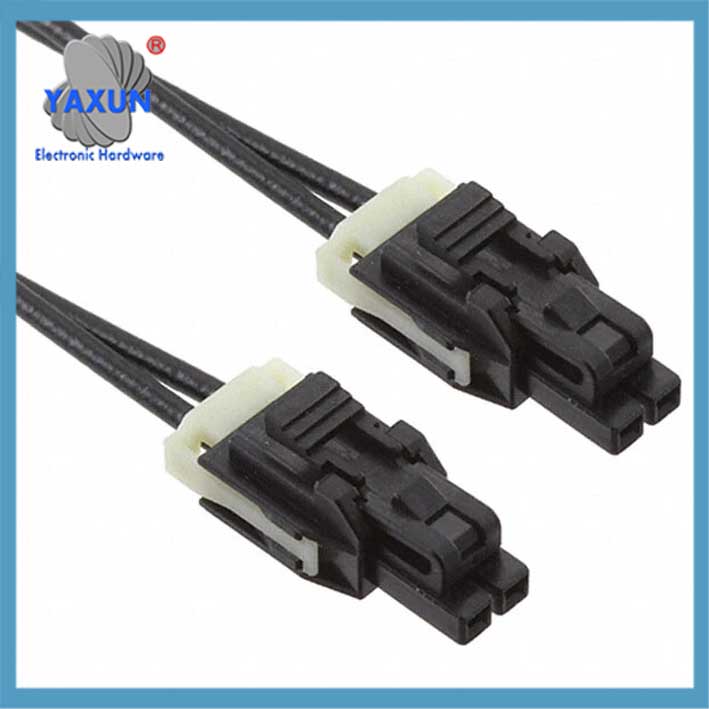Produktkategorien
Produkt Tags
Servo Kabelbaum funktionales Design und Fertigung
Bei der Herstellung von Servo -Kabelbädern werden spezielle Drahtbündel für die Präzisionspositionierung und Bewegung erstellt, in erster Linie in der industriellen Automatisierung. Diese Gurte, oft mit Servosmotoren verwendet, Stellen Sie kontrollierte elektrische Verbindungen für Aktuatoren bereit, Gewährleistung genauer und wiederholbarer Aktionen. In der Herstellung, Servogurte werden durch Schneiden montiert, Strippen, Crimp, Löten, und Routingdrähte, Oft mit automatisierten Geräten, um die Effizienz und Qualität zu verbessern.
Bei der Herstellung von Servo -Kabelbädern werden spezielle Drahtbündel für die Präzisionspositionierung und Bewegung erstellt, in erster Linie in der industriellen Automatisierung. Diese Gurte, oft mit Servosmotoren verwendet, Stellen Sie kontrollierte elektrische Verbindungen für Aktuatoren bereit, Gewährleistung genauer und wiederholbarer Aktionen. In der Herstellung, Servogurte werden durch Schneiden montiert, Strippen, Crimp, Löten, und Routingdrähte, Oft mit automatisierten Geräten, um die Effizienz und Qualität zu verbessern.
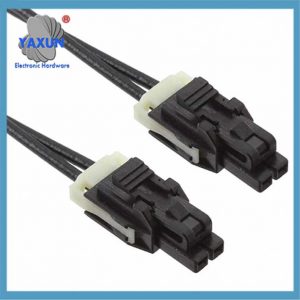 Rechteckige Kabelbaugruppe 2 Sockel zu Sockel 0,984′ (300.00mm, 11.81″) |
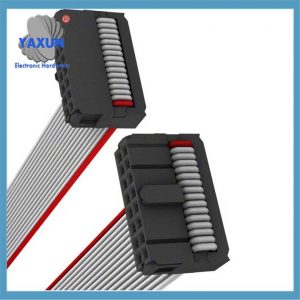 Rechteckige Kabelbaugruppe 16 Sockel zu Sockel 0,500′ (152.40mm, 6.00″ ) |
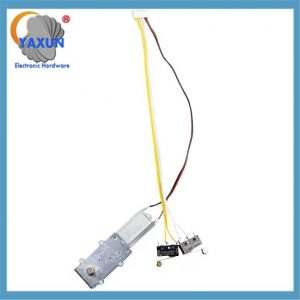 Servo -Kabelbaum mit Multiplex -Anschlusskomponenten eingestellt |
Das funktionale Design und die Herstellung von Servogurten sind die Kernverbindungen, um den stabilen Betrieb der industriellen Automatisierungsgeräte zu gewährleisten. Die technischen Anforderungen decken mehrdimensionale Indikatoren wie die elektrische Leistung ab, mechanische Stärke und Anpassungsfähigkeit der Umwelt. Das Folgende ist eine Analyse der wichtigsten Punkte:
ICH. Schlüsselpunkte des funktionalen Designs
Signal- und Stromübertragungsarchitektur :
Verwenden Sie Multi-Strang-Kupferdrahtleiter, um die Leitfähigkeitseffizienz zu verbessern, und stellen Sie sicher, dass der Drahtdurchmesser und der Querschnittsbereich den Stromanforderungen der Ausrüstung entsprechen;
Optimieren.
Anti-Interferenzstruktur Design:
Eingebaute Metallschicht- oder Aluminiumfolie-Abschirmschicht, um den Einfluss von elektromagnetischen Störungen zu unterdrücken (EMI) bei Signalübertragung;
Die Differentialsignalübertragungstechnologie verbessert die Fähigkeit zur Unterdrückung des gemeinsamen Modus -Rauschens und ist für Präzisionskontrollsysteme geeignet.
Design und Planung:
Drahtlängen, Steckertypen, und Routingpfade werden basierend auf den Anwendungsanforderungen ermittelt.
Materialvorbereitung:
Die Drähte werden geschnitten und auf die richtigen Längen und Isolationsschichten entfernt werden entfernt.
Beendigung:
Anschlüsse oder Anschlüsse werden an den Kabelenden unter Verwendung von Methoden wie Crimping oder Löten befestigt.
Gurtbaugruppe:
Drähte werden gemäß dem Design gebündelt und geleitet, häufig automatisierte Systeme für Aufgaben wie Schneiden verwenden, Strippen, und Routing.
Qualitätskontrolle:
Die Gurte werden getestet, um ordnungsgemäße Verbindungen und Funktionen zu gewährleisten, mit automatisierten Testsystemen, die die Konsistenz verbessern.
Anpassung:
Kabelbäume können auf bestimmte Anwendungen zugeschnitten werden, mit Variationen in Drahtmesser, Isolierung, und Steckertypen.
Funktionale Anwendungen:
Servogurte werden in einer Vielzahl von Anwendungen verwendet, bei denen eine genaue Kontrolle und Wiederholbarkeit von entscheidender Bedeutung sind, einschließlich:
Industrieautomatisierung:
Wird verwendet, um Roboter zu kontrollieren, automatisierte Montagelinien, und andere Maschinen.
Robotik:
Stellen Sie Roboterarme und andere Roboterkomponenten Kraft- und Kontrollsignale zur Verfügung.
Automobil:
In Fahrzeugen zur Steuerung von Aktuatoren wie Bremsen verwendet, Lenkung, und andere Systeme.
Luft- und Raumfahrt:
Wird in Flugzeugsteuerungssystemen und anderen Anwendungen verwendet, die eine präzise Bewegung erfordern.
Andere Anwendungen:
In medizinischen Geräten gefunden, CNC -Maschinen, und andere Anwendungen, die kontrollierte Bewegungen erfordern.
Schlüsselmerkmale und Vorteile:
Präzision und Genauigkeit: Servogurte ermöglichen eine präzise Kontrolle der Aktuatoren, Gewährleistung einer genauen Positionierung und Bewegung.
Zuverlässigkeit: Verwendet in anspruchsvollen Anwendungen, bei denen die Zuverlässigkeit kritisch ist.
Effizienz: Automatisierte Herstellungsprozesse und spezielle Geräte verbessern die Effizienz und senken die Produktionskosten.
Anpassung: Kann auf die Erfüllung der spezifischen Anwendungsanforderungen zugeschnitten werden.
Platzoptimierung: Effizientes Routing von Drähten und Kabeln im Kabelbaum ermöglicht eine optimale Nutzung des verfügbaren Platzes.
Dynamische mechanische Leistung Adaption:
Hoch flexible Scheidematerialien (wie TPU/pur) mehr als 10 Million Drag Chain Cycle Life Life, Geeignet für Hochfrequenzbewegungsszenarien wie Roboterfugen;
Twisted Leiterstruktur mit mehrschichtiger Schicht verbessert die Biege-Ermüdungsresistenz, und der Biegeradius kann erreichen 6 mal den Drahtdurchmesser.
III. Herstellungsprozessfluss
Raw Materialkontrolle :
Leiter bestehen aus sauerstofffreiem Kupfer (Ofc) Um die Leitfähigkeit ≥ sicherzustellen 98%, und das Scheidematerial hat die VW-1 Flame Resparedant Certification bestanden;
Die Terminalbeschichtung nimmt einen Gold/Silber -Verbundprozess an, und der Kontaktwiderstand beträgt ≤ 5mΩ.
Precision Processing Links:
Die CNC -Drahtabschneidgenauigkeit wird innerhalb von ± 0,5 mm gesteuert, und das Laserdrahtabstreifen vermeidet Schäden am Leiterquerschnitt;
Der Druckbereich der pneumatischen Crimp-Geräte beträgt 20-50n · m, und die Toleranz der Crimp -Höhe beträgt ± 0,03 mm.
Qualitätsüberprüfung System :
IEC ausführen 60332-1 Vertikaler Verbrennungstest, IP67 -Überprüfung der Schutzebene und 10G -Vibrationstest;
100% Online -Leitungstest, Isolationswiderstand ≥ 100 mΩ/km (500VDC).
III. Spezielle Szenario -Lösungen
New Energy Application:
Das 600-V-Widerstandsspannungsdesign wird mit einer doppelschichtigen Silikonisolierung kombiniert, um sich an die Arbeitsbedingungen von Elektrofahrzeugen mit hohen Stromanlagen anzupassen. High-Precision Equipment Integration:
Miniaturisierte Anschlüsse (M8/M12) Macht integrieren + Signalverbundübertragung, sparen 70% des Installationsraums;
Entwicklungstrends in diesem Bereich umfassen: Dirigent-Nano-Koating-Technologie zur Verbesserung des Verschleißfestigkeits, Übertragungsstruktur für optische Faserverbundverbund, um die Bandbreite zu verbessern, AI-gesteuerte intelligente Erkennungssystem, um die fehlerhafte Rate zu senken, usw.
Kontaktiere uns
Warten auf Ihre E-Mail, Wir werden Ihnen innerhalb von 24 Stunden antworten 12 Stunden mit wertvollen Informationen, die Sie brauchten.
 English
English العربية
العربية bosanski jezik
bosanski jezik Български
Български Català
Català 粤语
粤语 中文(漢字)
中文(漢字) Hrvatski
Hrvatski Čeština
Čeština Dansk
Dansk Nederlands
Nederlands Eesti keel
Eesti keel Suomi
Suomi Français
Français Deutsch
Deutsch Ελληνικά
Ελληνικά עברית
עברית Magyar
Magyar Italiano
Italiano 日本語
日本語 한국어
한국어 Latviešu valoda
Latviešu valoda Bahasa Melayu
Bahasa Melayu Norsk
Norsk پارسی
پارسی Polski
Polski Português
Português Română
Română Русский
Русский Cрпски језик
Cрпски језик Slovenčina
Slovenčina Slovenščina
Slovenščina Español
Español Svenska
Svenska தமிழ்
தமிழ் ภาษาไทย
ภาษาไทย Tiếng Việt
Tiếng Việt
